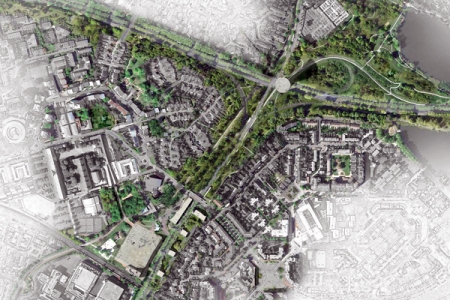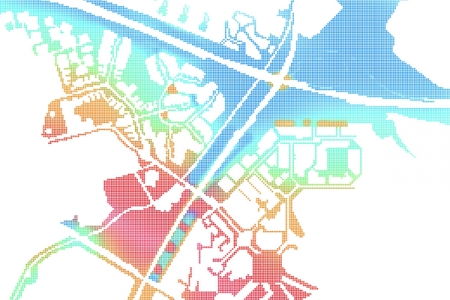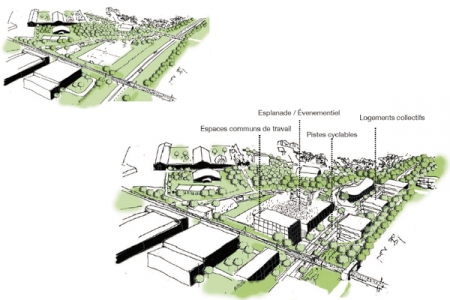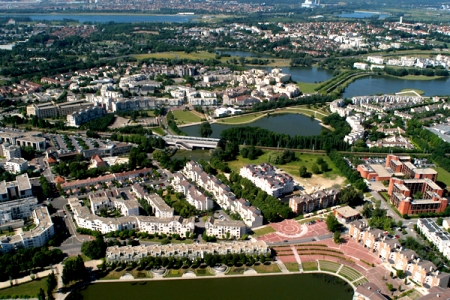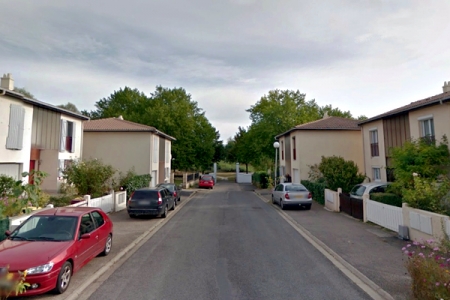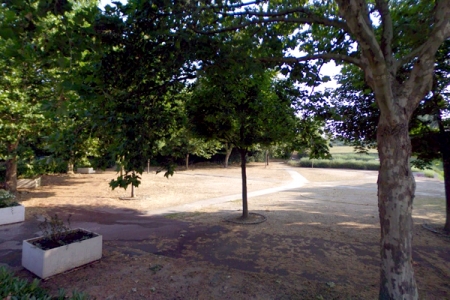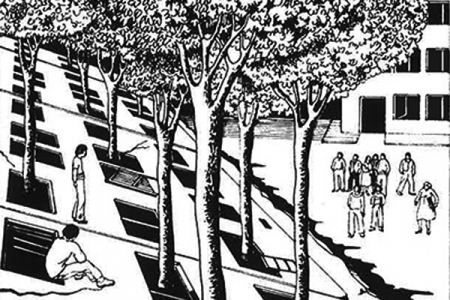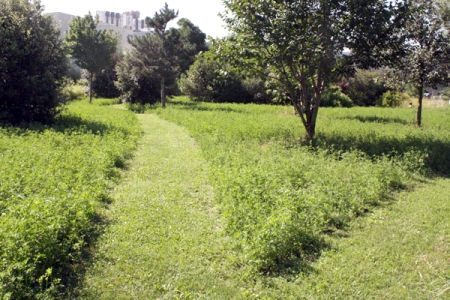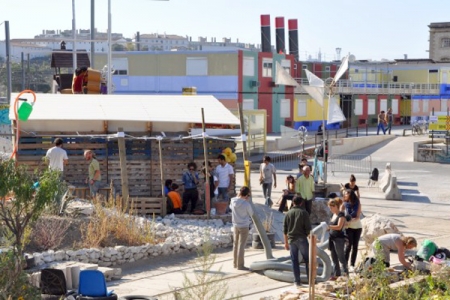La déprise
Marne-la-Vallée (FR) – Runner-up
TEAM DATA
Team Representative: Claire Girardeau (FR) – architect; Associates: Jonathan Cacchia (FR), Cécile Frappat (FR), Louis Méjean (FR) – architects
Contributors: Pierre-Yves Blévin (FR) – SSE manager; Mélanie Carratu (FR) – translator; Adrien Piu (FR) – video maker
Tohu-Bohu, Paris – France
contact@tohu-bohu.eu – www.tohu-bohu.eu
See the complete listing of portraits here
See the site page here

C. Girardeau, J. Cacchia, L. Méjean & C. Frappat
INTERVIEW
Click on the images to enlarge
1. How did you form the team for the competition?
We are young and independent architects, in activity or not, and we build our work experience either in architecture agencies, in association or travelling. We always bear in mind the importance of renewing our point of view on our work with fresh new perspectives.
Our team gathered around a common goal – the will to discuss and shed light on the current urban and architectural issues that we face in the daily practice of our work.
We also decided to work as a team because we are friends, with a common sensitivity but with a plurality of different ideas. This is what constitutes our team: a “tohu-bohu“ of complementary ideas, of experiences designed to develop new ways of working.
Of all possible sites in the E13 session, our curiosity got piqued with Marne-la-Vallée because of the story of its building process and its planning. It enabled us to seize the opportunity to think about a transition between the “Ville Nouvelle” and a more flexible city.
2. How do you define the main issue of your project, and how did you answer on this session main topic: Adaptability through Self-Organization, Sharing and/or Project (Process)?
New towns are the symbol of a specific architectural period: a generous and complete vision representing the hopes of the 1970’s. Whether this model was underwent or wished for, it remains fixed in our cities. Yet, we think it is questionable, especially when facing this system with ecological, economical and current issues.
We think that keeping cities entrapped in this system is outdated and unbearable. So, we are looking for means to shape these cities into resilient and adaptable places. But where and how could such mutations be possible? We choose to adopt a “back up” posture strategy to face this “Ville Nouvelle” model and especially concerning one of its main features: “Green Spaces”.
Instead of pursuing a pressuring, entrapping logic, we explore this backing up strategy to generate new urban projects. Its starting point is emancipation, which would give room to the city to pull itself together and stop being smothered. This backward movement can create a fertile vacant field –or space– in which a back and forth movement can take place again and engender flexibility. Unpredictability can happen again: such a new territory needs progressive waves for its constitution.
Moreover, we advise city makers to reconsider their ability to control, handle and live in such a territory. Instead, we do propose a humbler tactic to settle a “mastered uncertainty” on the territory in space and time.
3. How did this issue and the questions raised by the site mutation meet?
While discovering the site, we quickly realized that green spaces were a large part of its surface and were potential resources as well. Mostly, these spaces belong to city ornament or motorway junctions. Whether they are well kept or not, they remain costly and waste time. Nevertheless, they represent a field of possibilities.
We first tried to adapt common urban tactics but they all ended in unsatisfactory accumulative master plans. At this point, we adopted a reverse thinking and this posture led us to another strategy. We decided to get a “back up” posture and our starting point were the green spaces.
Finally, our project developed through thinking about the site’s peculiarities and the “Ville Nouvelle” general issues and focusing on their adaptability. This method of thinking back and forth led us to believe that a backing up strategy could help mutate the site, develop new urban concepts to reach a future for new towns.
4. Have you treated this issue previously? What were the reference projects that inspired yours?
We have been studying and working on these issues on various occasions. First while taking part in workshops in which we could think through all possibilities; but also during punctual tangible actions developed in associations. Finally, we also tackle these issues in our daily activities at work.
When in architecture school, some of us participated in the work group led by Jean Marc Huygen, architect and professor at the ENSA of Marseille and Grenoble. This work group tackled issues raised by E13 and many more (appropriation, reuse, linkage). Our common references helped us build our thinking of an adjustable city.
Regarding other references, we considered “New towns” and crossed referenced them with current architectural elements which originate continuity. We found inspiration in the views of Augustin Berque and Gilles Clément about city and nature. We also read closely and discussed Alain Bourdin’s intervention: “Uncertainty as a driving force”.
Our work in architectural agencies influenced us too; for example with the project of La Friche de la Belle de Mai in Marseilles, considering its progressive building process and its co-op organization. These organizations raised our curiosity and we also studied them in associations relying on solidarity and social economy.
5. Today –at the era of economic crisis and sustainability– the urban-architectural project should reconsider its production method in time; how did you integrate this issue in your project?
The current situation asks for a general evolution of our system and this is why our project is based on a possible organization of our society rather than on a commonly fixed project. By focusing on the process guiding the work of planners and architects, it manages to adjust a few rules to add flexibility, rapidity and equality in the procedures.
We propose to alter the process by adding a third party to manage the green spaces. Time becomes a fundamental aspect in the process. The urban and architectural project is confronted with uncertain data, and this creates a balance between its growing or decreasing influence on the territory. Our approach focuses on the flexibility of uses in time and space to allow the organisation of a “variable geometry” territory.
6. Is it the first time you have been awarded a prize at Europan? How could this help you in your professional career?
Yes! It is the first time we have been rewarded at Europan and this participation strengthens our convictions. It reinforces our will to keep moments of research and reflection about the evolutions of our work. This experience has certainly been beneficial as we reached a new level of functioning as a group and we are eager to pursue our researches and works on this particular field together in the future.
